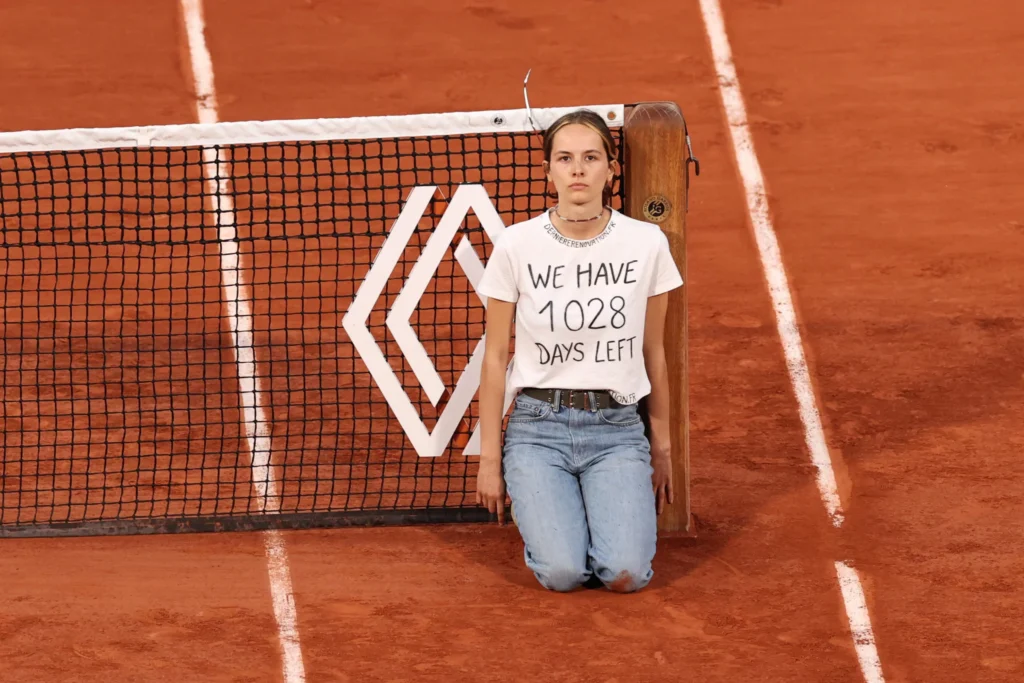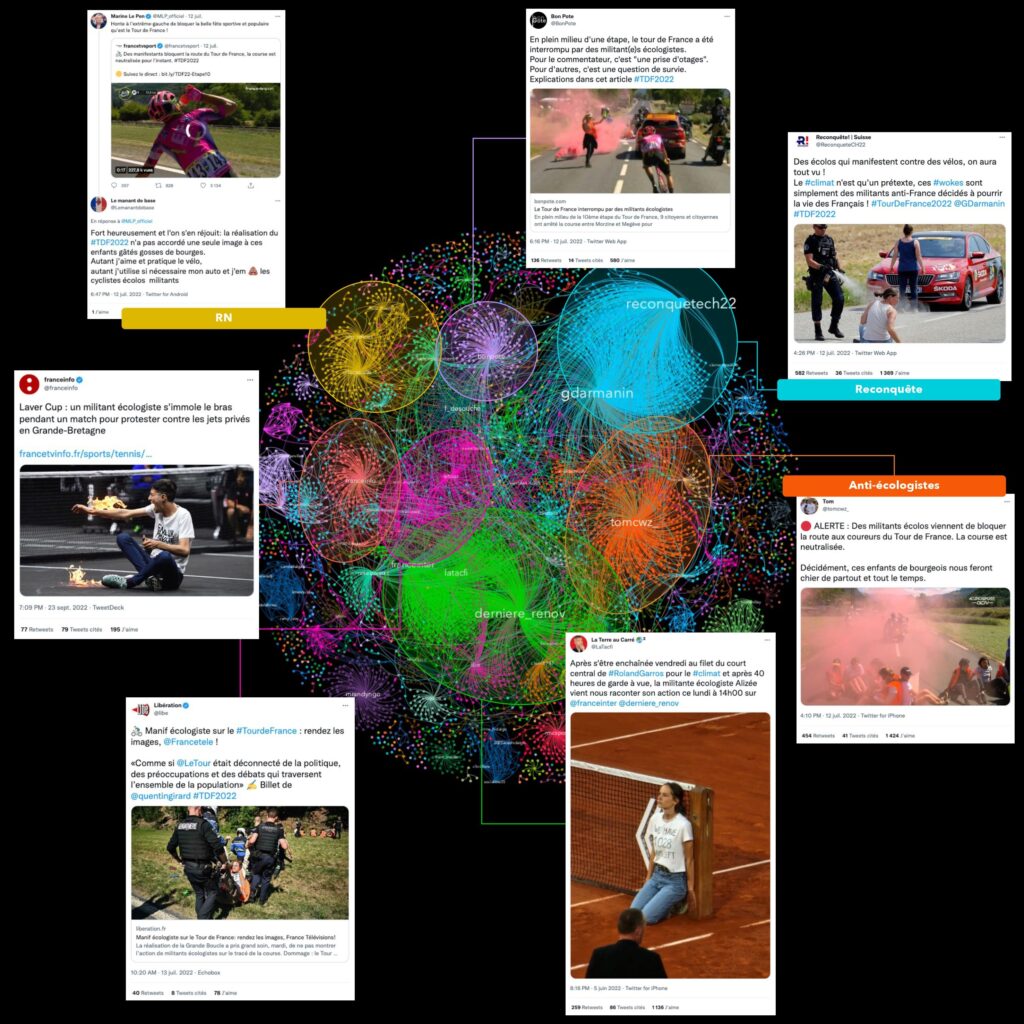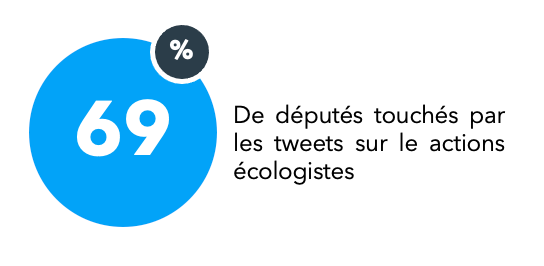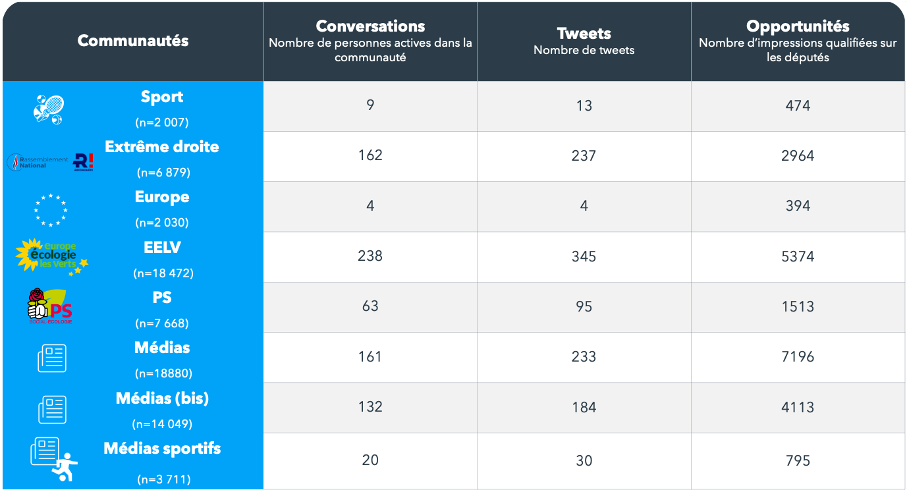Sommaire
Environmental activists seeking a bit of visibility through sport: success or failure?
The World Cup in Qatar, the Winter Games in the desert, footballers in private jets... Against a backdrop of global warming, the visibility that sport provides seems increasingly to be seen as a prime way for environmental activists to raise awareness.

Fad or real impact over time? How do these actions circulate on Twitter, and what happens to them over time?

Repeated ephemeral actions
At the start of the year, environmental organisations did not mobilise very often at sporting events, but this increased sharply over the summer, taking advantage of major high-profile sporting events. (F1 Grand Prix, Roland-Garros, Tour de France...)

Despite the succession of actions, they only made their mark on Twitter over a limited period of time, up to 7 days. The only exception was the environmental activist who hung onto the net on centre court at Roland-Garros, wearing a T-shirt with the message: "We have 1,028 days left". She was able to take advantage of media coverage in the weeks following the event, as well as references made during similar actions (such as the interruption of the Laver Cup).

Visible actions on social networks
Mainly by the media and the far right.

These actions are mainly publicised by the national general press, the left-leaning media and the sports press. Apart from this media coverage, there are three types of reaction:
- The covers of the event for its unusual side;
- Sports fans who don't appreciate interruptions, offering some scathing criticism of the environmentalists ;
- Far-right politicians who accuse the far left of disrupting events that are emblematic of France. This is done by ironising the event.

As a result, the message of the actions seems to fade away in favour of criticism or amazement at the unusual actions, just as it is not taken up by organisations with similar messages.
So, is it effective?
The question is: is it effective?
Firstly, the linked associations are mentioned at the time of the event, but quickly disappear. Visibility is therefore ephemeral. What's more, visibility is relatively low. (5000 tweets for all the actions listed)
Secondly, each action captures different audiences (different sports, different commentators and so on). That said, this different audience is more likely to come from the far right and different media than from real sports fans and therefore the general public.

Thirdly, we looked at the impact of these actions on politicians. To do this, we reconstructed their Twitter newsfeed to see if the activist campaigns had passed through it or if they had spoken out. It was mainly RN MPs who spoke out. In terms of the absolute number of covers for all the actions, these actions made it possible to reach 69% for 22,823 impressions of the Members of the National Assembly.
Almost ¾ of these impressions were obtained by the traditional media. The rest were obtained by the RN & Reconquête community and to a lesser extent by an EELV community. Twitter may be the medium of choice in the political sphere, but it's not always easy to make an impact within the MPs' ecosystem. In the current context, using the media remains the best way of making an impact in the political sphere.


Conclusion
It can be said that these actions remain ephemeral, with little impact on public opinion. The visibility of these actions is essentially based on the traditional media and the reactions of the extreme right.
*The data is collected over a period from1 January 2022 to 17 October 2022 using the following query: ((("laver cup" OR "roland garros" OR "roland-garros" OR "formule 1" OR formula1 OR "F1" OR "everton" OR "tour de France" OR TDF2022 OR RG2022 OR rolandgarros OR Halle OR "grand prix" OR "Lièges-Bastogne-Liège" OR "Tour des flandres") (activiste OR militant OR militants OR activistes OR ecologiste OR ecologistes)) OR (ULM Greenpeace)) -(racailles OR "militants du RN" OR palestine OR "Tour de France des Bus")
Photo credit: Getty Images



